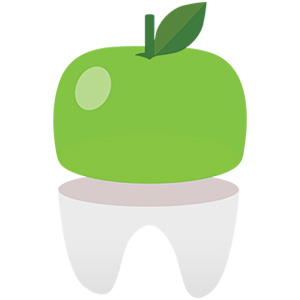“Stand up straight.” “Stop slouching.” Parents and grandparents everywhere have been saying this to kids and teens for generations and, you know what, they were, and still are, right. But not just for the reasons you might think like avoiding spine trouble or looking attentive and confident. Your posture is also tied to your jaw and teeth.
A Misaligned Jaw May Affect Your Balance
The spine is the pillar of your body and it’s surrounded by overlapping muscle systems and nerves. Because everything is connected to some degree, misalignment in one area of the body can cause misalignment in another area. The jaw is no exception.
When the upper and lower teeth don’t come together properly because of the size or positioning of the teeth and jaw, it’s called malocclusion. Malocclusion impacts your ability to chew, your oral health, and the appearance of your smile. But it plays a role in your posture too.
While it’s a chicken-and-egg situation, several studies, including a 2016 study conducted by researchers in India, found malocclusion and postural body stability (maintaining equilibrium and balance through good posture) are directly correlated. In this particular study, the more severe a subject’s malocclusion was, the less stability and balance they had.
While additional research needs to be done to determine whether posture is behind the malocclusion or malocclusion is behind the postural instability, it does support the idea that the effects of malocclusion extend far beyond the mouth.
Airway Issues and Forward Head Posture Go Hand in Hand
I’ve talked about mouth breathing and sleep-disordered breathing before. But, to reiterate the main points, when you can’t breathe properly through your nose, which can happen for a number of reasons, including a narrow palate since the palate is the floor of the nose, it leads to mouth breathing.
Unlike nasal breathing, which maximizes oxygen absorption, mouth breathing makes the body work harder to get enough oxygen in the blood. It can also interfere with craniofacial development, resulting in a small jaw, weakened orofacial muscles, and the tongue sitting back further than it should. All of this adds up to an increased risk for sleep-disordered breathing, including obstructive sleep apnea and upper airway resistance syndrome.
In a subconscious attempt to open the airway, studies show that people with this airway obstruction are much more likely to adopt a forward head posture. With ideal posture, the vertebrae in the spine are stacked one on top of the other. With forward head posture, however, the vertebrae in the cervical spine (your neck) aren’t in alignment.
This is a pain in the neck, literally, because it puts stress on the spine and neck muscles, causing neck aches and headaches. Over time, the misalignment may also lead to nerve compression and other spinal problems, such as lower back pain.
Text Neck Interferes With Resting Jaw Position
Can bad posture cause jaw pain? Absolutely. The use of electronics like cell phones is notorious for causing “text neck.” This refers to repetitive stress injuries from hunching over to look down at devices.
Because head, neck, and jaw posture are related, when you have your head angled towards your phone or tablet for long periods, it strains the neck and chewing muscles, and pulls the mandible, or lower jaw, down. Sitting at a computer all day with rounded shoulders and the neck and jaw extended has a similar impact.
In both situations, your jaw isn’t in its proper resting position, and the temporomandibular joints (TMJ) and related structures are out of alignment. You’ll probably find yourself unconsciously clenching your jaw.
This constant tension and jaw clenching (bruxism) can cause facial and jaw pain, make malocclusion worse, and be a source of inflammation.
Forward Head Posture is Also Linked to TMD
Speaking of the TMJ, there are studies that suggest people with temporomandibular disorders (TMD) commonly have forward head posture and neck pain. As I said earlier, holding the head and neck this way creates excessive tension in the cervical spine and the muscles of the face and neck.
The muscles pull the lower jaw toward the upper jaw, moving the TMJs out of position. Over time, the wear and tear and stress on the joint this creates will take its toll. Whether head and neck posture causes TMD or aggravates it is left to be seen but, in some cases, treatment will require orthodontics and physical therapy to improve alignment of the jaw and spine.
How to Fix Bad Posture
Now that you know bad posture can cause jaw pain and may cause or exacerbate TMD, malocclusion, and other issues, you’re probably wondering how to improve your posture. I’ll be sharing some general tips, but, keep in mind, that it’s not something that will happen overnight.
If you’ve had bad posture for years, you’ll have to retrain your body. This requires constant practice and awareness. But committing to standing up and sitting up straight is worth it.
Good posture will keep your spine healthy, improve your balance and stability, help you keep your jaw in an ideal resting position, and prevent structural misalignment from head to toe. Here are some pointers:
- When you find yourself slouching, bring yourself back to a centered position. Keep noticing your posture and adjusting it until it becomes a habit. You’ll want to:
- Lift your chest and roll your shoulders back and down.
- Pull your belly button into your spine and up so that your core is supporting you.
- Pull the head back so that your ears are directly over your shoulders. Try to keep your head in this neutral position whether you’re at rest or in motion.
- If you’re standing, keep your feet about hip-width apart with a micro-bend in the knees and your feet flat on the floor. Tuck your tailbone slightly under. Imagine there is a straight line running from your ears to your shoulders to your hips to your knees to your ankles.
- If you’re sitting, keep your feet on the floor and imagine that straight line running from your ears to your hips.
- Make a concerted effort to keep your jaw in its proper resting position. Ideally, when your jaw is at rest, it should be parallel to the ground, your lips should be together, your teeth should be touching or just slightly apart, and your tongue should sit against the roof of your mouth.
- Learn how to relax your jaw. Unclenching your jaw will also ease tension in your chewing and neck muscles. This will make it easier to maintain good posture and avoid pain. If your jaw is feeling especially tight, try these moves to relax it:
- Bring your tongue to the roof of the mouth with the tip of your tongue right behind your top front teeth. While keeping your tongue in position, open and close your mouth. Do this 10-20 times until you feel the jaw tension ease.
- Close your lips, keep your teeth apart, and put your tongue on the roof of the mouth with the tip behind your top front teeth. While your jaw is in this relaxed position, use your fingers to massage along the jawline. Then, use a circular motion to massage your TMJs (in front of and directly below your ears).
- Smile wide and open your mouth as far as you can (you shouldn’t feel any pain). Hold it for about 10 seconds and release. Repeat this several times.
- Bring your cell phone or tablet towards your face instead of dropping your head to look at it whenever possible. This can help you avoid text neck and stop the jaw clenching that occurs because of the tension and misalignment.
- Think about ergonomics at work and home. If you sit at a computer all day at your job or spend hours every night doing your homework at your desk, it’s worth investing in a good chair and ensuring your table is at the right height and your computer is at the correct distance. Mayo Clinic has a great guide here.
How Do You Fix Forward Head Posture Due to Jaw Size?
If your forward head posture is because the size of your jaw is causing airway issues, simply trying to sit up straight might not be enough. You’re most likely unconsciously extending your neck so that your body can get enough oxygen.
The good news is, orthodontic treatment can be really successful. Research published in The Angle Orthodontist found that rapid maxillary expansion in children and teens, not only widened the upper jaw, but also expanded the nasal airway and reduced forward head posture.
Having the problem diagnosed in childhood is ideal. When I have a patient who’s still growing, I can intercept the issue with phase 1 orthodontic treatment using an appliance, such as a rapid palatal expander. Since the two halves of the upper jaw don’t fuse until around puberty, the expander is able to push them apart and widen the jaw much more easily.
However, even in older teens and adults, there are still options. In severe cases, orthognathic surgery (corrective jaw surgery) could be needed. But with advances in the field, there are non-surgical solutions that can achieve good results in some situations.
Schedule a Consultation With a Brooklyn Orthodontist
Whether your jaw is affecting your posture or your posture is affecting your jaw, schedule a complimentary consultation at Fresh Orthodontics in Brooklyn today! My team and I offer personalized orthodontic treatment focused on creating healthy, stable alignment and confident smiles.














